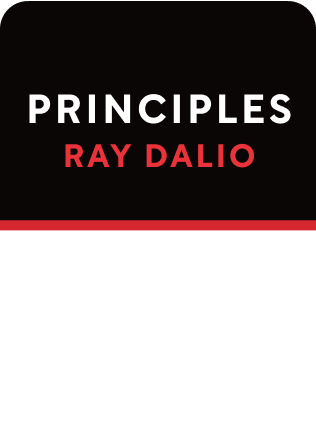

This article is an excerpt from the Shortform summary of "Principles: Life and Work" by Ray Dalio. Shortform has the world's best summaries of books you should be reading.
Like this article? Sign up for a free trial here .
What is an idea meritocracy? How does an idea meritocracy work, and is it really the best way to get ideas?
Idea meritocracy means that the best ideas win, regardless of who or where they come from. According to Ray Dalio, this is the best way to make decisions in a company.
Read to find out why an idea meritocracy works.
What Is an Idea Meritocracy?
So what is an idea meritocracy? An idea meritocracy is an environment in which the best ideas win, regardless of where or whom they came from. Dalio believes the idea meritocracy is the best system for making decisions.
The way to build an effective idea meritocracy is to:
- Bring together smart, independent thinkers
- Have them thoughtfully disagree with each other
- Get past disagreement using agreed-upon systems.
Together, this will yield the best ideas and collective thinking. Idea meritocracy works better than just one person coming up with the ideas and issuing orders. It also works better than a group of smart people who can’t thoughtfully disagree with each other.
An idea meritocracy is built on a few foundational principles:
- Radical truth
- Radical transparency
- Thoughtful disagreement
- Believability-weighted decision making
Now that you know the answer to the question “what is an idea meritocracy” you can learn about how to manage and encourage ideas.
Managing Ideas
So how do you get ideas? How can you generate and manage ideas in an idea meritocracy? Dalio was stung by his overconfidence in the early 1980s. He now believed that the best way to be right was for smart people to disagree with each other and explore each other’s reasoning. He never failed to point out when other people were being dumb, and he expected others to do the same to him. He saw this like playing jazz together, going back and forth on ideas and building better decisions than individuals could alone.
There was mixed reception to this radical candor. People close to him, who had worked with him for years, understood he had good intentions. But people who had less contact with him found him abrasive and oppressive. He seemed like an intellectual bully, and his tirades were demotivating.
When his senior team delivered this feedback to him, Dalio was hurt. He had never intended to humiliate other people, and he realized there was a gap in communication. This friction kicked off his process of clarifying his principles in writing, so that everyone across the company could understand his intentions and behavior, and so everyone had a common set of rules to treat each other respectfully.
In essence, he wanted to automate and systematize people management, much like he had automated financial trading.
Amygdala Hijackings
Often, the subconscious you hijacks your brain and actions, and the conscious mind needs to refuse to obey its instructions. If you react spontaneously and emotionally without thinking, that is your subconscious you in control.
To stop this, you need to recognize the warning signs when this happens—your heart rate increases, your breathing gets more intense. These are sympathetic nervous system reactions. When you recognize this happening, you should trigger an escape plan to get out of this hijacked state, so the rational you can get control again.
Afterward, consciously reflect on what causes the amygdala hijackings. Train the subconscious you the same way you would teach a child to behave—with loving kindness and persistence.
Funnily, when you talk to someone else, your “two yous” are dealing with their “two yous.” So you can be having one of four conversations, without realizing which one you’re having. Your subconscious you might be talking to the other person’s rational you, or vice versa; or both of your subconscious emotional yous are battling with each other. No wonder misunderstandings and arguments are so common. You need to recognize the two ‘you’s’ to have an idea meritocracy.
The Two Yous Can Work Together
Yet the best ideas and decisions may come from the cooperation of the two yous, not when the rational you completely subjugates the subconscious you.
For example, sometimes the greatest inspiration “pops up” from our subconscious. These happen most often when you’re relaxed and not consciously forcing yourself to come up with great ideas. The conscious logical mind then examines the ideas for how good they are.
Dalio personally likes transcendental meditation to connect the conscious to the subconscious.
Don’t Worry About Producing RIght Answers
A common problem, especially among high achievers, is wanting to be the one to produce the correct answers. Our environment stresses this—parents and schools want you to have the right answers on tests and be the one producing the bright ideas. But in an idea meritocracy, you need to accept that ideas can and will come from anywhere.
But taken too far, this mindset can make you close-minded to other ideas and what other people have to offer.
If you value being right and having the best ideas above all, you shouldn’t care if the right answer comes from you or from someone else. Focus on finding the truth and the best ideas.
Mental Maps x Humility
Chart yourself on two dimensions: 1) humility and open-mindedness, and 2) mental maps, or what you know and how you reason.
Many people have low values for both, and they remain trapped there. They know little, yet they are convinced they know everything. (Shortform note: This is similar to the Dunning-Kruger effect, a cognitive bias where people who are bad at something are incapable of recognizing how bad they are.)
The other quadrants are also suboptimal. If you have high open-mindedness but poor mental maps, you will have problems picking the right people and ideas to follow.
If you have good mental maps but low humility, you miss out on better ideas, and you leave a lot of value on the table.

———End of Preview———
Like what you just read? Read the rest of the world's best summary of Ray Dalio's "Principles: Life and Work" at Shortform .
Here's what you'll find in our full Principles: Life and Work summary :
- How Ray Dalio lost it all on bad bets, then rebounded to build the world's largest hedge fund
- The 5-step process to getting anything you want out of life
- Why getting the best results means being relentlessly honest with everyone you work with






